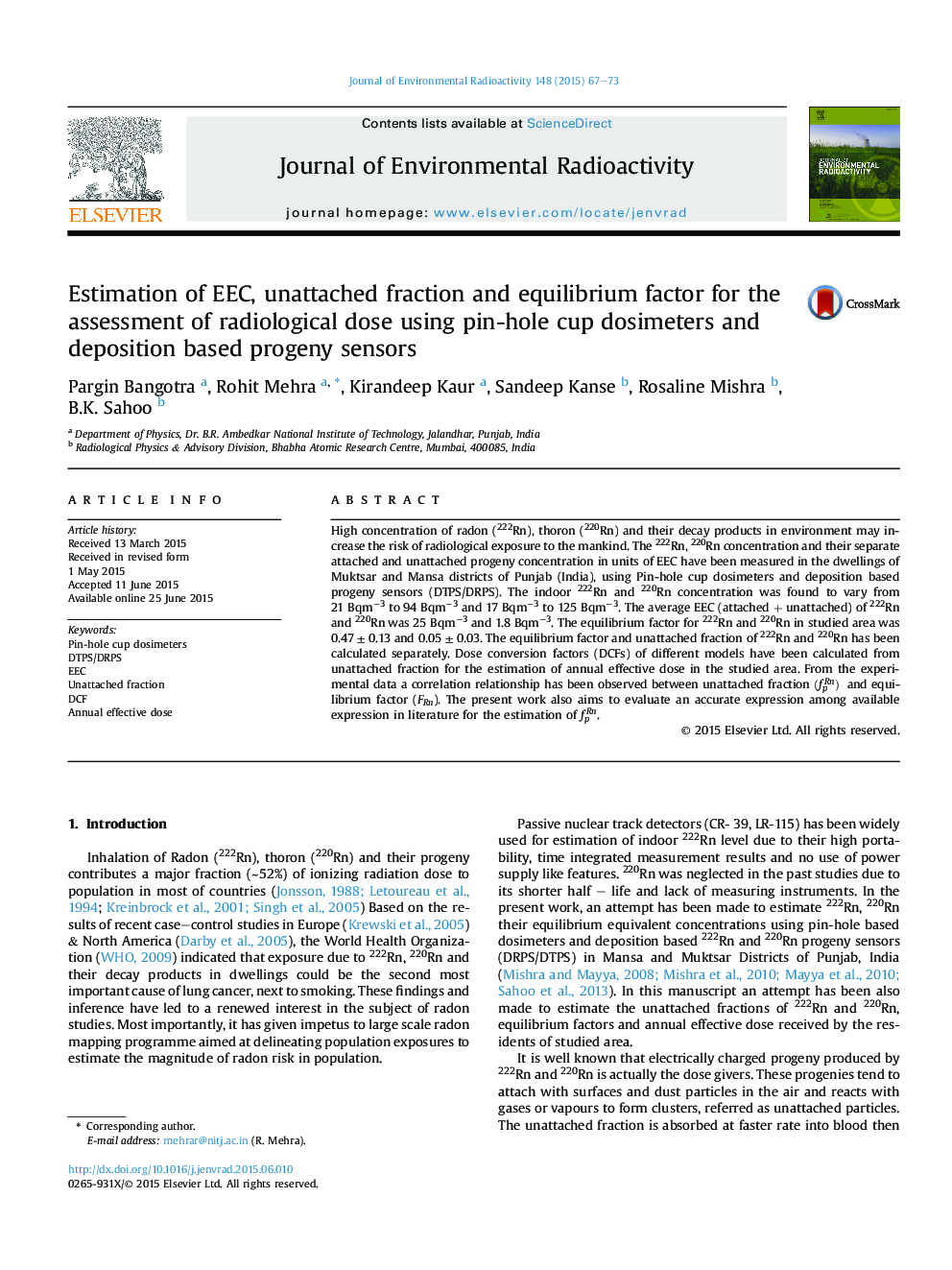| Article ID | Journal | Published Year | Pages | File Type |
|---|---|---|---|---|
| 1737890 | Journal of Environmental Radioactivity | 2015 | 7 Pages |
•The 222Rn, 220Rn concentration and their progeny have been calculated.•Unattached fraction and equilibrium factor for both 222Rn, 220Rn has been calculated.•The correlation relationship has been observed between the unattached fraction (fpRn) and equilibrium factor (FRn).•The correct dose action level in any particular cites can be identified only by knowing the correct dose conversion factors.•The calculated DCFs values (Dosimetric approach) are 1.4–3.6 folds higher than 4 mSv WLM−1 (ICRP) and these discrepancy further needs to be investigated.
High concentration of radon (222Rn), thoron (220Rn) and their decay products in environment may increase the risk of radiological exposure to the mankind. The 222Rn, 220Rn concentration and their separate attached and unattached progeny concentration in units of EEC have been measured in the dwellings of Muktsar and Mansa districts of Punjab (India), using Pin-hole cup dosimeters and deposition based progeny sensors (DTPS/DRPS). The indoor 222Rn and 220Rn concentration was found to vary from 21 Bqm−3 to 94 Bqm−3 and 17 Bqm−3 to 125 Bqm−3. The average EEC (attached + unattached) of 222Rn and 220Rn was 25 Bqm−3 and 1.8 Bqm−3. The equilibrium factor for 222Rn and 220Rn in studied area was 0.47 ± 0.13 and 0.05 ± 0.03. The equilibrium factor and unattached fraction of 222Rn and 220Rn has been calculated separately. Dose conversion factors (DCFs) of different models have been calculated from unattached fraction for the estimation of annual effective dose in the studied area. From the experimental data a correlation relationship has been observed between unattached fraction (fpRn) and equilibrium factor (FRn). The present work also aims to evaluate an accurate expression among available expression in literature for the estimation of fpRn.
